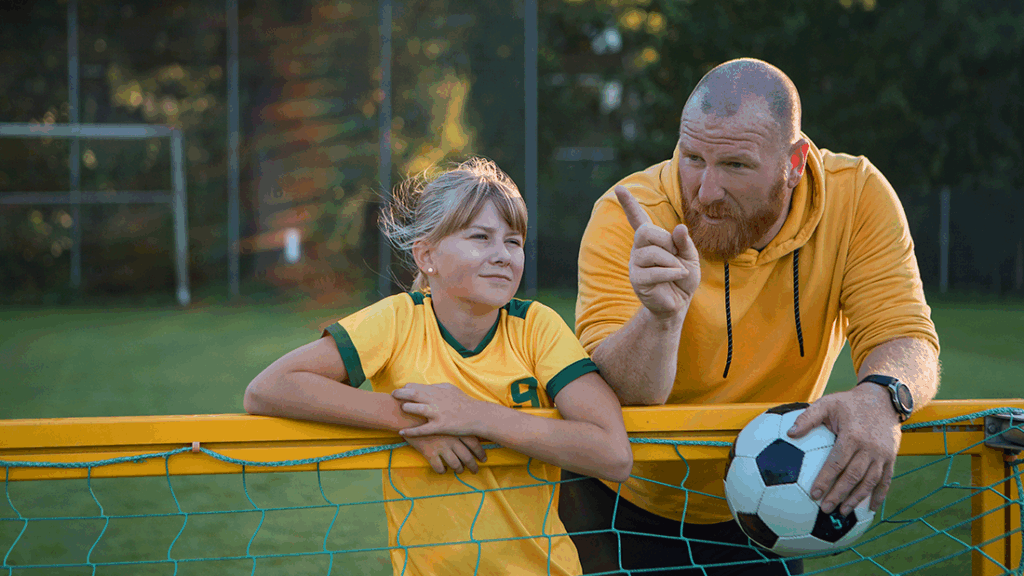5 Ways to Practice Prevention During Sexual Assault Awareness Month
Prevention Education Series
The goal of this series is to bridge the gap between prevention education theory with on-the-ground practice.

April is Sexual Assault Awareness Month (SAAM)
With busy schedules, it can be hard to prioritize abuse prevention at home and with other kids in our lives. April is Sexual Assault Awareness Month (SAAM). SAAM is a great time to intentionally focus on this topic and raise awareness about abuse. And awareness means more than just knowing that abuse happens. It means doing the work to reflect on the ways our own family dynamics and cultures can unintentionally foster an environment where abuse can thrive or go unchecked.
SAAM can be a powerful catalyst for initiating important conversations with the kids in our lives about safety, consent, and prevention. These topics can be hard to bring up, especially with kids. Maybe you feel like it’s never the right time, or that you’ll say the wrong thing. But recognizing this month and what it means is a great way to start the conversation.
Start the Conversation:
“Did you know that this is Sexual Assault Awareness Month? Do you know what that means? Why do you think we have awareness months like this?”
Establishing and maintaining body boundaries, giving and receiving consent, and talking openly (and regularly!) about abuse are skills. And just like all other skills, they need practice to get right. Instead of closed doors, be the adult kids feel comfortable coming to with questions.
Use this month to expand your own knowledge base, practice the difficult conversations, and normalize talking about abuse, consent, and boundaries with kids. Here are five ways you can spend this month practicing abuse prevention.
5 Ways to Practice Prevention
1. Start with self-care.
Talking about abuse can be difficult for those who have experienced it. Survivors may have strong physical and emotional reactions when addressing this topic. If you are a survivor, spend some time seeking support before you have these discussions. Talk to a counselor, practice coping strategies (like meditation or grounding exercises)—whatever helps you protect your mental and physical health. When you feel supported, you can better support your child’s prevention education in a way that doesn’t reactivate your own trauma.
2. Learn more about sexual abuse in sport.
Although this can be a difficult topic to discuss, there are resources to help you prepare. You can use our SafeSport Ready™ app to:
- Read about how to respond when someone tells you about abuse
- Take a quiz about the warning signs of grooming
- Assess your sport organization’s prevention policies
The information and interactive activities in the app will help you understand how abuse happens in sport and how to respond.
3. Disrupt the single conversation narrative about “The Talk.”
Abuse prevention should not be a conversation that happens once. Instead of “The Talk,” adults should have regular micro talks with kids about these issues. Take the opportunity to talk about this topic a few times during SAAM.
This strategy lets kids know that body boundaries and safety are ongoing topics, not a one-and-done scary or awkward talk with adults. It also opens the door for future conversations, which could include disclosures. When kids know it’s OK to ask questions and that their thoughts and feelings are important, they are more likely to come to you when they have a concern. Regular conversations also help adults work through some of their nerves when talking about abuse. Remember, this is prevention in practice. The more often you talk about it, the more comfortable you (and your kids) will be.
“How about we read a few books this month that talk about body boundaries?”
4. Teach kids they have the right to say NO.
Remind them about the importance of speaking up if something doesn’t feel right.
“How about we practice asking each other for permission before hugs this month, and then we can talk about how it feels?”
Conversations like this allow adults to reassure kids they will be believed and supported. They also help kids understand that they are not alone—you are there to help decide what to do. SAAM is a great opportunity to help kids identify trusted adults they can go to with a problem.
Suggested Resources
- You Know, Sex: Bodies, Gender, Puberty, and Other Things (Cory Silverberg and Fiona Smyth)
- Wait, What?: A Comic Book Guide to Relationships, Bodies, and Growing Up (Heather Corinna and Isabella Rotman)
- Being a Trusted Adult (National Center for Missing & Exploited Children)
5. Talk to them about respecting other people’s NO.
In addition to learning how to say NO for themselves, kids also have the responsibility to respect other people’s NO. When we think of abuse and our kids, we tend to think of them as potential victims, not harm-doers. As difficult as it is to imagine our kids crossing others’ boundaries, it does happen.
Teaching clear, direct lessons about consent is a critical step in primary prevention. It is our responsibility as adults to not only protect kids from abuse but also to teach them about appropriate touch and behavior towards others. Use this month to encourage kids to reflect on their potential to unintentionally cross other’s body boundaries. This can help them develop empathy for others who are harmed.
Suggested Resources
- Teaching Kids About Boundaries (Child Mind Institute)
- How To Teach Consent Early (National Sexual Violence Resource Center)
- If Your Child May Be Harming Another Child (RAINN)

Monica Rivera
VP of Prevention Education at the U.S. Center for SafeSport
Monica has spent nearly two decades in the field of interpersonal violence prevention, much of that time working directly with survivors of abuse. She leads our team of subject matter experts who share a belief in the transformative power of prevention education.
Do you have any questions or ideas? Please reach out to [email protected].
Featured Resource
Our online courses train athletes, coaches, and other sport allies to recognize, prevent, and respond to abuse. Learn more about these courses and how to choose the right one for yourself or your organization.
JOIN OUR EMAIL LIST
Stay connected with the latest news, resources, and tools. Enjoy our quarterly e-newsletter, The Gameplan.
